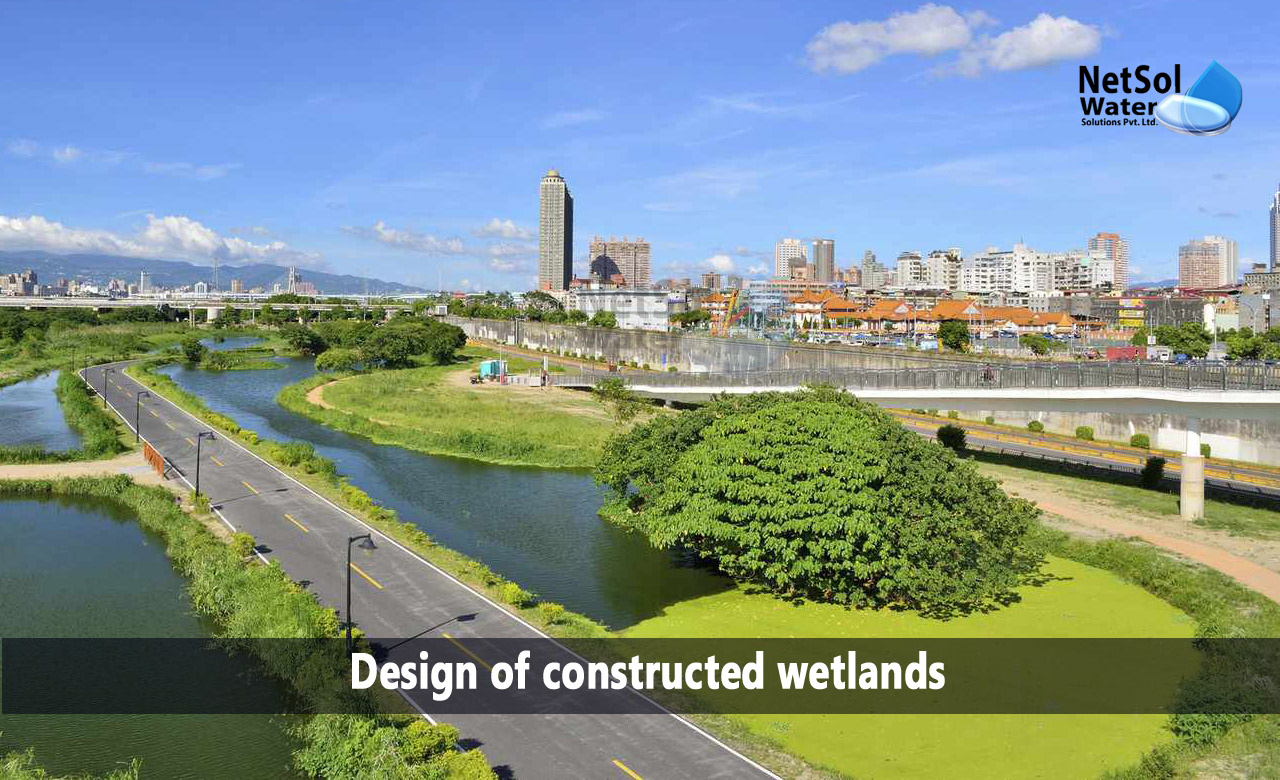The success of the constructed wetland systems depends on "purposeful manipulation which is a critical engineering component that has to be incorporated into design and operation", since constructed wetlands or CWs are constructed ecosystems, which are meant to carry out particular task of wastewater treatment.
Let’s look at the design parameters of constructed wetlands!
What are the design parameters of constructed wetlands?
The constructed wetland can be customized to the local conditions and available area, thanks to the wide range of design, material, and technological alternatives. Costs vary according to the cost of materials and land, but these wetlands are a very economical way to treat wastewater where land is less expensive and more readily available.
Parameters to consider for designing constructed wetlands
Constructed wetland design factors to take into account include:
• Climatic circumstances
• Topography
• Geological composition
• Land availability
• The amount and velocity of the wastewater now and in the future
· Effluent quality regulations
• Reuse of effluent possibilities (if applicable)
• Water body receiving effluent
• Total expenses
There are few other parameters of design in a constructed wetland!
Professional guidance: For the aim of wastewater treatment, constructed wetlands must be designed and implemented with professional assistance.
In addition to using other technologies like biochar, or microbial fuel cells (MFC), they could be vertical flow constructed wetlands (VFCW), surface flow constructed wetlands (SFCW), horizontal sub-surface flow constructed wetlands (HSSFCW), or hybrid constructed wetlands.
Plant types, filter material, treatment system layout, and bed configuration all have an effect, on the effluent (water exiting the treatment wetland) quality from these Constructed wetlands.
Design for inputs: To address incoming contaminants to be eliminated, the type of constructed wetland, any additional technologies it includes, hydraulic retention time, and even the particular plants incorporated in the system, must be designed.
These can include heavy metals, pesticides, suspended solids, pathogens (bacteria, protozoa, helminths, and viruses), chemicals, medicines, and personal care products (PCPP). All of these can be significantly addressed or removed by CWs.
Design for climate: Because, they are protected from the cold air during the winter, sub-surface flow systems are perhaps more suited to the circumstances in India.
Monitoring: To assess the efficiency of wastewater treatment, and to ensure that adaptive management can fill treatment gaps if they are found, water quality monitoring of outputs versus inputs is crucial.
Design considerations for constructed wetlands in hot, dry environments
1: The wastewater that has been treated for reuse, the treatment effectiveness should meet the quality required for the particular reuse purpose, restricting treatment performances to those that are truly necessary.
2: A bigger amount of effluent with the right quality available for reuse can be obtained by segregating wastewater, and treating greywater separately.
3: Due to their inherent shorter hydraulic retention time, vertical flow beds may be preferred to horizontal flow beds in order to reduce evapotranspiration losses. VF beds can be filled with coarser sand, up to the smallest gravel on site, to reduce the hydraulic retention time, as well the performances in terms of pollutants removal.
4: Due to the higher volume of water contained in the reactor and the resulting buffering effect, horizontal flow beds are easier to construct and operate, because intermittent loading is not necessary. They also improve the flexibility of the treatment whenever, there is a significant variation in hydraulic and organic loads.
5: When compared to regions with moderate climates, warmer countries may have larger organic loads of CWs. Even though they are based on limited experiences, the existing studies indicate that the organic load can reach 10–30 times greater values, than the typical norms used in India.
6: The success of the plantation is favoured by an initial commissioning phase, in which the water level is kept high.
What do we offer?
Constructed wetlands in wastewater treatment may be the greatest option for your industry! To assist you with constructed wetland manufacture, operation and service, we provide various customization benefits.
For further information or to make a purchase, please contact us at +91-9650608473 or enquiry@netsolwater.com



